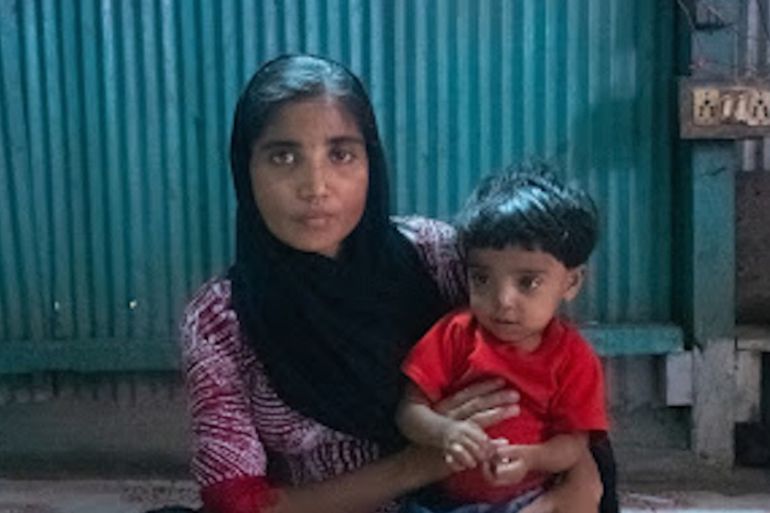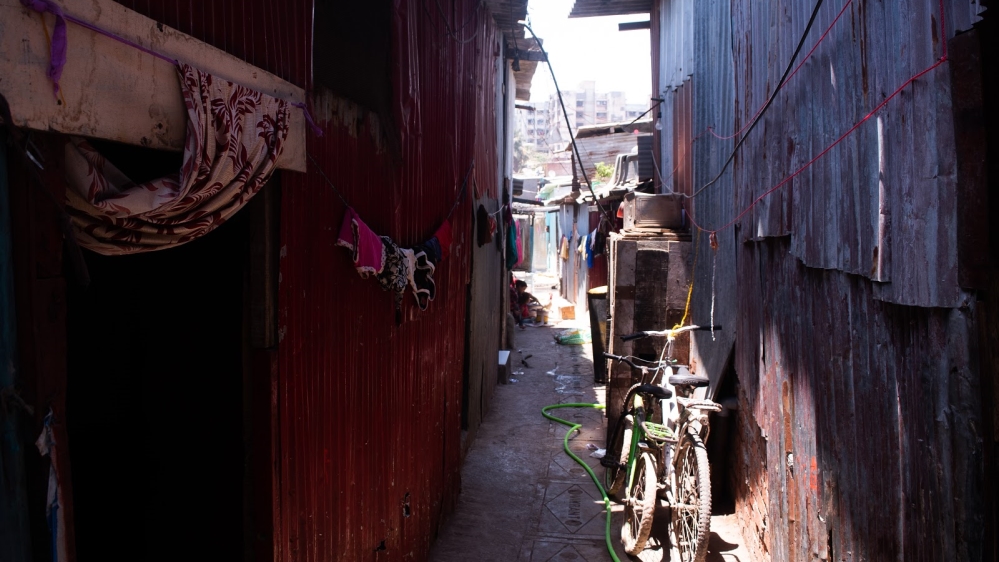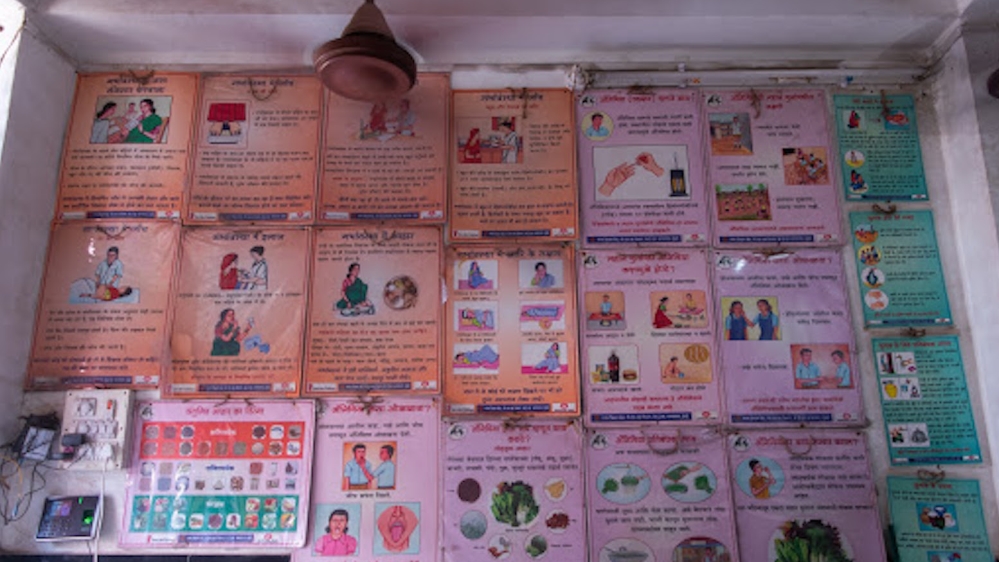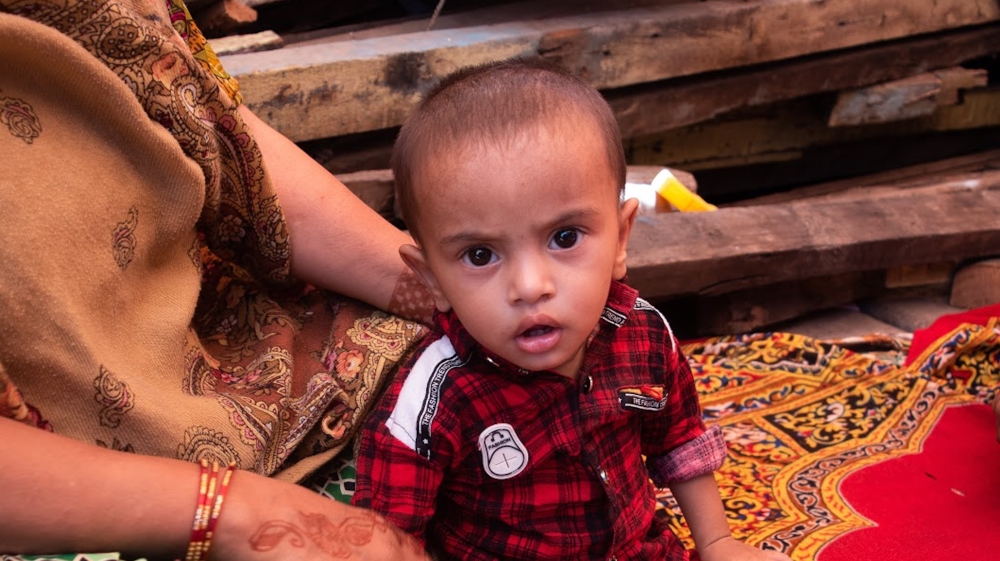Feeding India’s future: Why malnutrition is bad for the economy
India will likely have the world’s largest workforce by 2030, but many of its children still go hungry.

Mumbai, India – At 18 months old, Zaina* was still unable to walk. Her worried mother suspected the problem was caused by the constant bouts of diarrhoea her daughter had when she was younger.
“She couldn’t keep any food down and even now her arms and legs are very weak,” said Badia Shah*. Eventually, Zaina needed emergency high-calorie food packs to treat what doctors called severe acute malnutrition, a potentially life-threatening condition caused by an extreme lack of nutrients.
Keep reading
list of 4 itemsAmid global polarisation, the pandemic agreement encourages cooperation
UK report finds decades-long infected blood scandal was covered up
Philippines plans vaccination drive as whooping cough outbreak claims lives
Zaina will grow up to become part of the world’s largest workforce – India’s – which appears set to overtake China’s by 2030. But with close to 40 percent of Indian children stunted because of a lack of adequate nutrition, the country risks missing out on what experts call a “demographic dividend” – economic growth boosted by workers who can generate ever-larger amounts of goods and services.
Shah and her family live in Shivaji Nagar, one of the most deprived slums in India’s financial capital, Mumbai. Here, more than half of the children are stunted – a proxy indicator for cognitive and physical underdevelopment. Life expectancy is just 39 years, lower than the world’s worst-performing country, Sierra Leone, where it is 52 years, according to the World Bank.
The residents of Shivaji Nagar complain that authorities have long neglected them. Their population has grown but vital infrastructure and employment opportunities remain absent.
The only maternal health facility in the area was demolished in 2014 and is yet to be replaced, according to local NGOs. A lack of piped water means families spend on average 12 percent of their income on supplies from private water tankers, funds that could go towards more nutritious, but expensive, types of food.
‘Unacceptably high’
Though decades of economic expansion have made many Indians wealthier, levels of malnutrition remain “unacceptably high” according to the 2018 Global Nutrition Report, an annual assessment of food security around the world commissioned by governments, donor organisations, civil society, multilateral organisations and the business sector.
This is because researchers have only recently begun studying how malnutrition affects a person’s ability to contribute to economic development, something economists describe as human capital.
“For years after Independence, the government’s focus remained on traditional development challenges, starting with [food, clothing & housing] in the 1970s and then [electricity, roads, water] in early 2000,” Dr Chandrakant Lahariya, a New Delhi-based public policy and health specialist told Al Jazeera, referencing two contemporary election slogans.
“As one of the fastest-growing large economies, it’s important we are now not complacent and address the slow progress in eradicating malnutrition,” he added.

Health issues are likely to take on greater significance as India aims to transition to a knowledge-based economy and away from low-skilled jobs, says Jorge Coarasa, a senior economist with the World Bank’s health, nutrition and population global practice.
“In the context of the changing nature of work where most manual jobs will eventually be automated, human capital will also determine the competitiveness of a country’s workforce,” he told Al Jazeera.
“Cognitive skills and socio-emotional proficiency that cannot be easily provided by machines will be essential,” he added.
India’s population currently operates at just six and a half years of peak productivity, compared with 20 in China, and ranks in the bottom 20 percent of countries globally, according to a recent study published in the British medical journal The Lancet.
The study also warned policymakers to “ignore at their own peril”, evidence that greater investments in education and health, improve human capital and the gross domestic product (GDP).
At 1.5 percent of GDP, India’s healthcare expenditure is also significantly short of the five percent recommended by the World Health Organisation, and lower than poorer South Asian countries such as Nepal and Sri Lanka.
‘Children are not a vote bank’
With a network of 1.3 million local health centres, known as anganwadis, tasked with overseeing the nutrition and pre-school learning of those under six years old, the Indian government has run the world’s largest early childhood development scheme since 1975.
But beset by funding cuts, poorly trained staff and woeful infrastructure, many centres are in a critical condition, lacking running water, toilets and electricity connections, according to a survey conducted by the Ministry of Women and Child Development.
In Mumbai’s Shivaji Nagar, where families live off an average monthly income of 7,800 rupees ($110) and around a tenth regularly face food insecurity, many of these centres are unable to provide the government-mandated take-home nutrition packs that could help treat thousands of malnourished children, says Dr Ninad Salunkhe, chief operating officer at Apnalaya, a local NGO.
“On paper, everything is there and working, but amidst funding shortages and a lack of oversight, implementation on the ground is weak,” he told Al Jazeera. In an area that has seen huge population increases, up to 50 percent of families still have no access to these centres that are on the front line of child welfare, he added.

“We have become the public health system for a lot of these families,” Salunkhe said, referring to the organisation’s programme to help anganwadi workers and reach more families like Zaina’s.
Apnalaya’s experience is not unique. NGOs and civil action groups such as Child Rights and You have railed against successive funding cuts and policy ambivalence towards key early childhood programmes they say must be prioritised.
They call for better-defined policies, efficiency drives and improved coordination between multiple, often sluggish, government departments.
“They have the money and the resources, but no one is taking ownership of the issue and the two largest stakeholders are reluctant to work together,” said Salunkhe, referring to city and state authorities who work against each other.
He says a lack of coordination between the two authorities hinders progress in places like Mumbai’s Shivaji Nagar.
A lack of political will among successive governments is another major reason why early childhood development is neglected, says Ali Mehdi, an economist and senior fellow at the Indian Council for Research on International Economic Relations (ICRIER).
“Simply put, children are not a vote bank. If you look at political manifestos you’ll hardly see any mention of child welfare,” Mehdi told Al Jazeera. Economic growth alone will not be enough to resolve the malnutrition problem, which often stems from policy discrimination towards poorer, marginalised groups, he added.
When India’s federal government devolved greater spending power to the states in 2015, funding for nutrition programmes saw a decline as many states withheld supplementary financial support. This is a clear example of how child welfare is perceived as a low priority, a position that risks reversing a declining trend in child malnutrition, experts say.
“There is a certain political economy to these things,” Mehdi explained. “If we only focus on the technocratic side of things – the interventions and policies – we’ll miss the bigger picture.”
Malnutrition drives inequality
Children born to the poorest 40 percent of Indian families are currently three times more likely to be malnourished than the richest 10 percent, according to the UK-based charity Save the Children, indicating that India risks reinforcing existing social inequality if it does not tackle its malnutrition problem.
Nutrient deficiency impairs brain development, likely impacting children’s futures. Children who are malnourished score worse in English and maths tests, and earn 20 percent less in life than those who had a healthy childhood, according to a Save the Children report.
But investing in a public healthcare system can level the playing field by ensuring equal access to healthcare, according to research by ICRIER.
Currently, 66 percent of India’s total health expenditure is paid for by citizens themselves. It’s also a major reason many families slip into debt and poverty, creating further barriers to economic equality.
ICRIER’s Mehdi welcomes plans to build more primary healthcare centres under a new national health programme, dubbed ‘Modicare’.

Increased health access will improve mortality rates, but also “keep more money in people’s pockets, help them send their children to school and try for more competitive jobs,” he explained.
“This is where the focus for policymakers should lie,” he added, by helping India create “inclusive growth”.
Several low-income countries have implemented equitable healthcare systems and made significant gains in reducing the prevalence of malnutrition.
Lahariya points to Bangladesh as “a modern nutrition superstar”, where child stunting fell by nearly 50 percent in less than two decades through “targeted interventions”.
“There is enough knowledge and learning out there now, that there’s no reason why India shouldn’t be able to make the same progress,” he added.
Lahariya says improving nutrition could help reduce the amount of lost productivity, currently running at between three percent and five percent of India’s gross domestic product.
With pressure on the government to maintain high economic growth rates, there are signs policymakers now view health as an investment in future prosperity and tackling malnutrition is gaining traction.
In November 2018, the Indian government launched the National Nutrition Mission, an attempt to consolidate and improve existing schemes, and achieve a malnutrition-free India by 2022. Funding for the mission was hiked from $419m to $492m in the government’s latest Budget.
Coarasa from the World Bank points to the recent Swachh Bharat or “Clean India” campaign to fund toilet construction and end open defecation as an example of a successful policy that improved human capital.
The campaign tackled “one of the most persistent underlying causes of stunting” and received the “highest political backing,” he said, suggesting a shift in policymakers’ attitudes.
In Shivaji Nagar though, sanitation and nutrition challenges persist as toilets, affordable healthcare and disposable income remain in short supply.
Zaina’s mother, Badia Shah, has one request. “They must make the water more affordable,” she implored. “Maybe then I could buy more meat and vegetables in the market. We could also bathe more frequently and I would worry less about the kids falling sick.”
*Names changed on request